Exploring the Mastery of Peter Paul Rubens
One of the most famous Flemish Baroque masters, he is known for capturing motion in his dynamic figures and also his sensual use of colors. Here are 11 of his best works from a large body of exciting art.
1. The Elevation of the Cross (1610-1611)
The Elevation of the Cross is one of Rubens’ most important works, and it shows how he could create an impressive atmosphere through dramatic confrontation. The painting is a portrait in three sections and shows the crucifixion of Christ. The central panel features a dynamic, Christ crucified with his body raised on the cross and surrounded by sinewy male figures struggling to help lift it. The energetic postures, strong contrasts of colours and dramatic narrative are hallmarks of Baroque painting.
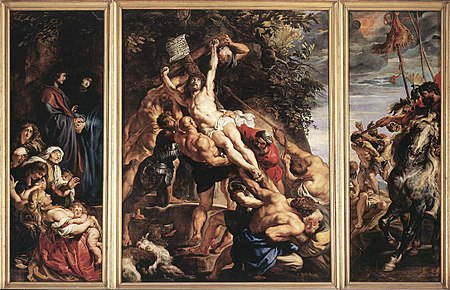
2. Massacre of the Innocents (1611-1612)
Perhaps the most chilling is Rubens’ depiction of the biblical Massacre of the Innocents that King Herod ordered. It depicts a maelstrom of violence as mothers shelter their children from the Roman soldiers. Along with the gut-wrenching fear faces, and Rubens’ ever amazing use of chiaroscuro effects (lots more on that later!), it makes for quite a chilling yet tender image.
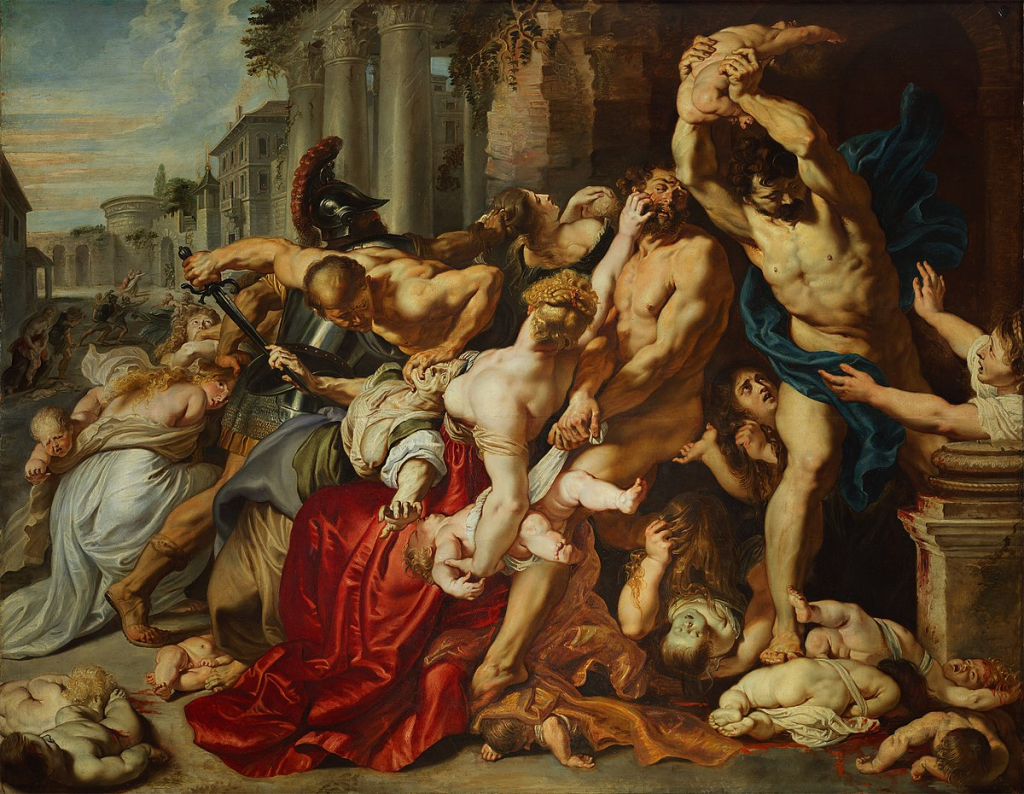
3. The Garden of Love (1633-1635)
Whereas his other works were more dramatic in nature, “TheGarden of Love” is a celebration of love and all that it has tooffer. A depiction of idealistic scene of couples in courtship life with a rich backdrop filled with love and youth, represented by cherubs, flowers. The warm, glowing light and the gentle palette add to the romantic and festive mood of the painting, making it one of Rubens’ most popular works.
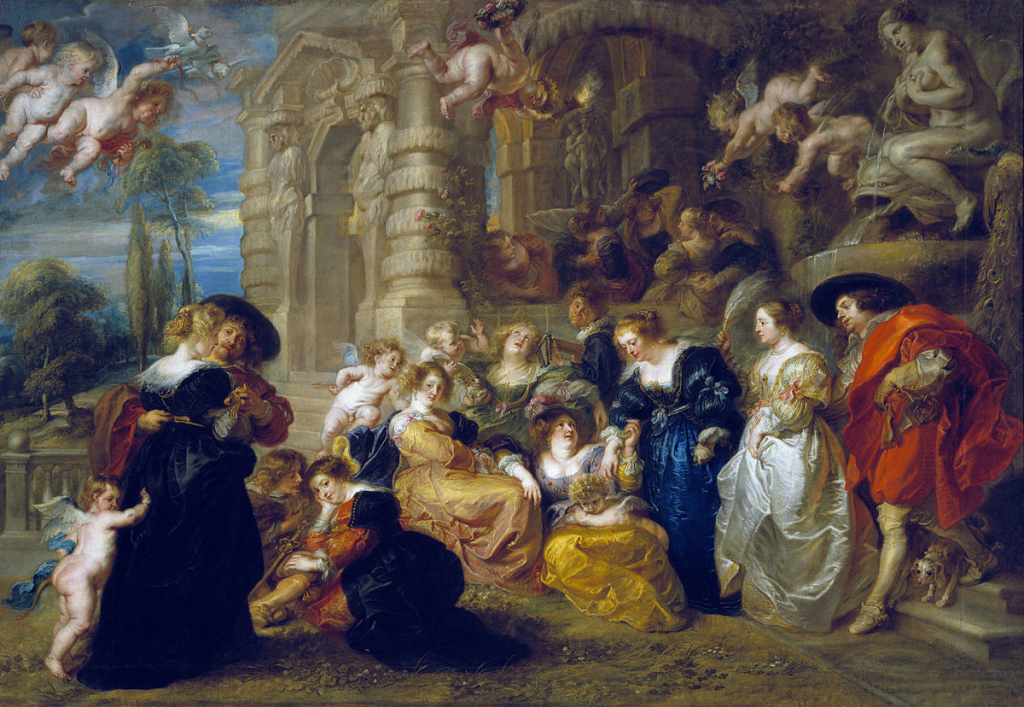
4. Prometheus Bound (1611-1612)
A minimalist tableau of the mythological punishment of Prometheus for bringing fire to mankind, Promethueus Bound. Rubens worked with Frans Snyders, who painted the eagle attacking Prometheus’s liver. It featured an intense sense of drama and agony, intertwined in the artwork to make Prometheus’ misery seem more cause for fellow feeling than terror.
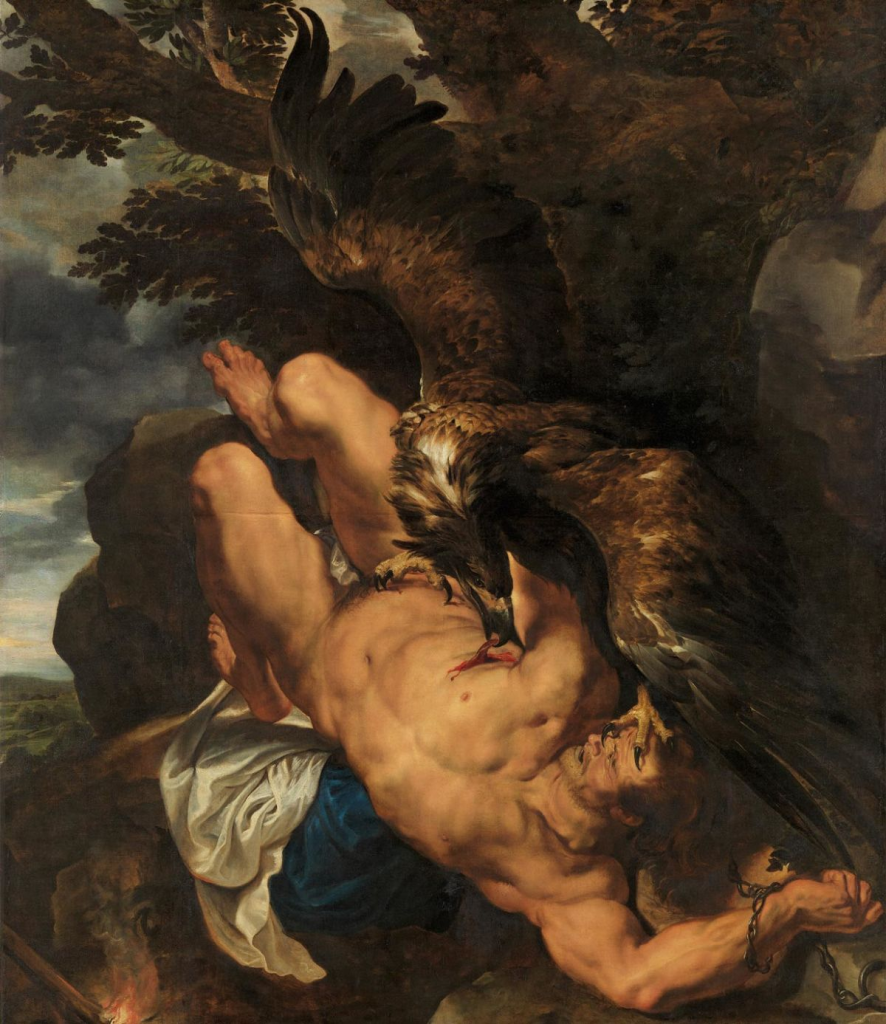
5. The Descent from the Cross (1612-1614)
Acclaimed painter Rubens also had strong religious paintings, a striking representation of the moment when Christ came down from the cross, another famous religious painting by Van Rubens. This is a master composition, with the figures grief-stricken and respectful around Christ. Light is also used to highlight the sickly, grey corpse of Christ against a darkened background, enhancing the sheer emotional power of this disturbing yet beautifully-executed scene.
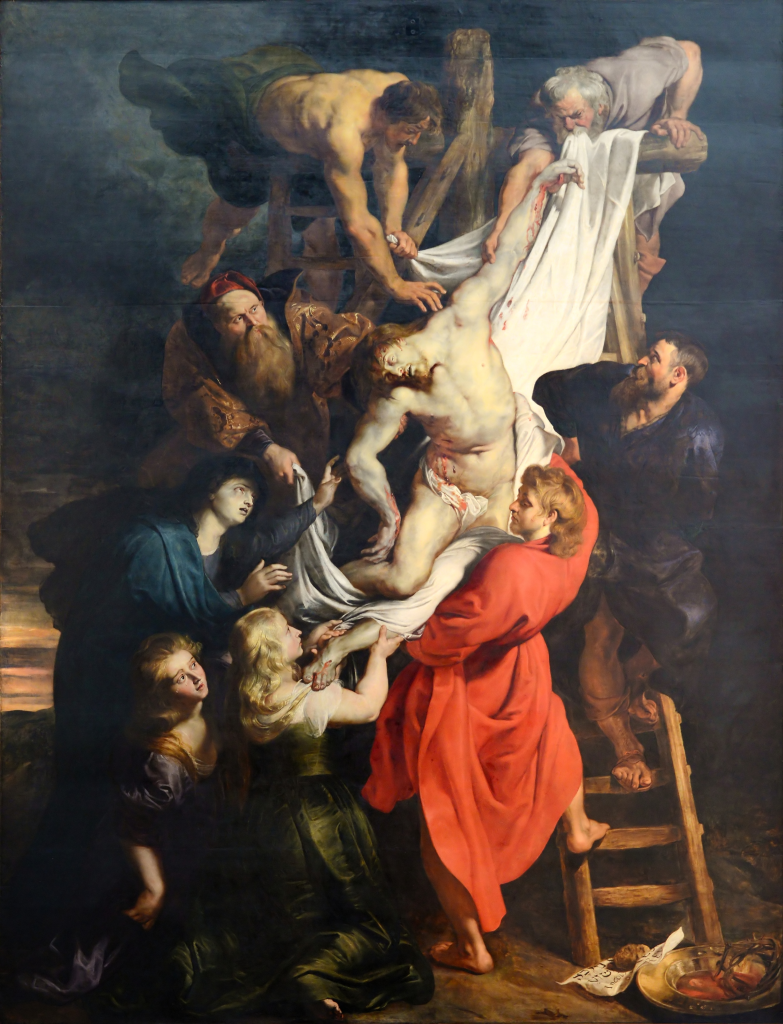
6. Samson and Delilah (1609-1610)
An image from the film of “Samson and Delilah,” shows Samson’s hair being cut by Delilah. Samson Pasirana by Arin Dwihartanto Sunaryo The scene in the painting is tense as we see a subdued Samson lying in Delilah’s lap, but behind them are also soldiers waiting in the shadows. The sumptuous textures to everything from the velvet of Delilah’s dress to the flowing hair of Samson make this painting richly tactile as well as sensuous and pyschological.
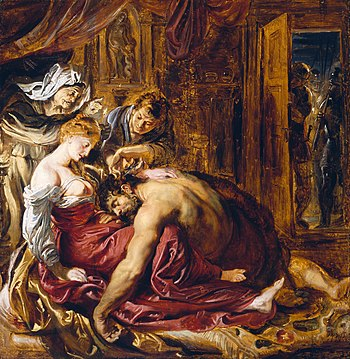
7. Consequences of War (1638-1639)
The Consequences of War is a testament to Rubens’ profound concern about the ongoing Thirty Years’ War, and it presents an unlikely proposition against its opponents. The painting abounds with allegorical figures – Mars the brave war god bursting through a ruinous scene in others. The dark subject matter of the gloomy palette and chaotic energy emphasizes the disdain and failure that war brings upon humans thus making this an intense interpretation of I feel is inevitable situation.
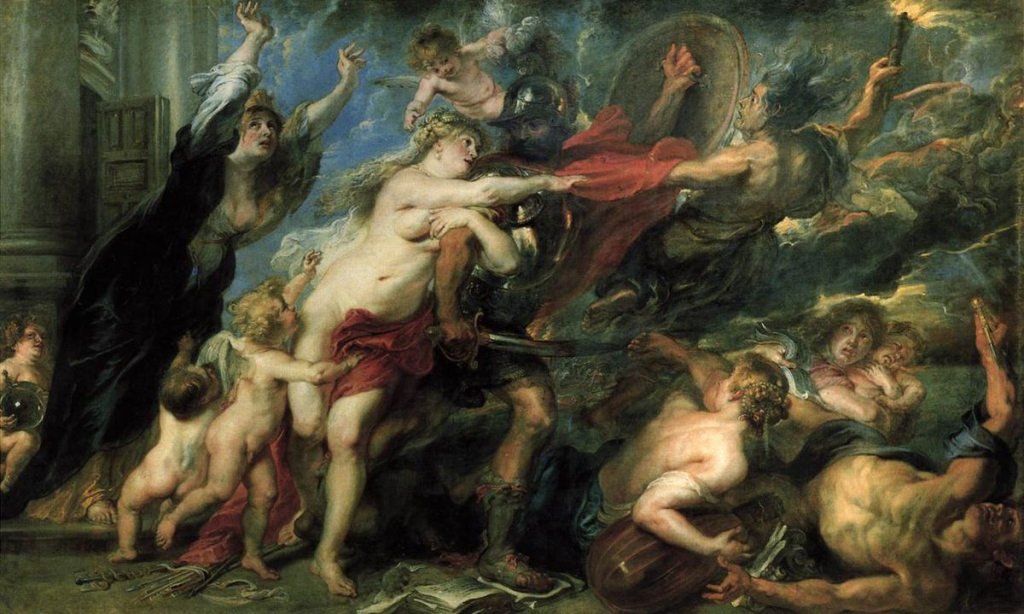
8. The Fall of Man (1628-1629)
This provides the biblical story of Adam and Eve’s tempting in Eden, in The Fall of Man. Rubens collaborated with Jan Brueghel the Elder, [who painted] the rich, detailed background. The painting serves as an examination on the weakness of humanity, Adam and Eve’s faces filled with inner turmoil as they both grab for the forbidden fruit. A composition so beautifully sorrowful, it attires the innocence to sin.
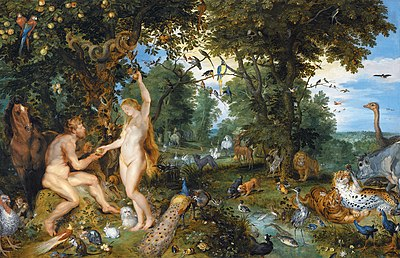
9. The Feast of Venus (1635-1636)
The most energetic and ornamental of Roman festivals are invoked by this vibrant fresco, the Feast of Venus. It depicts nymphs, satyrs and cupids cavorting together in a boisterous celebration. Rubens’ sumptuous coloration, and the tactile treatment of the figures, emphasizes not just a celebration of love and fecundity but also make this work an absolute feast to look at.
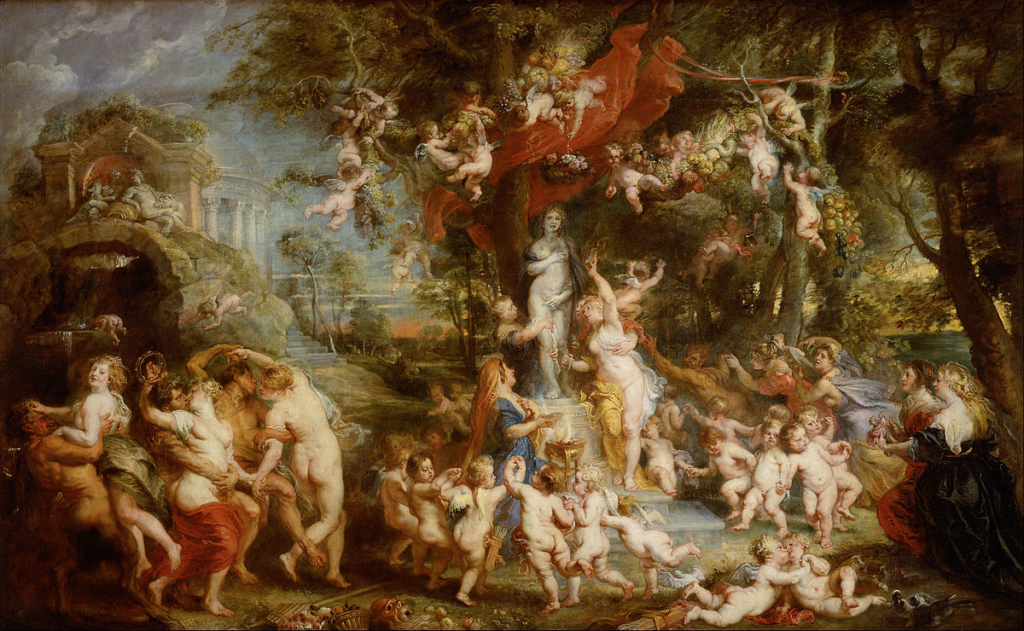
10. St. Sebastian (1614)
Rubens’ “St. Sebastian” shows the Christian martyr bound to a tree by ropes and arrows piercing his flesh. This portrait captures the dichotomy of the saint’s corporeal agony and inward calm. What is created instead is a striking portrayal of martyrdom and faith with the harsh contrast of light and shadow alongside the sheer rendering of Sebastian’s body.
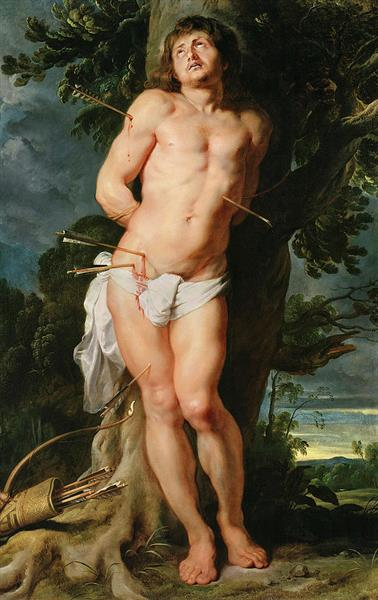
11. A View of Het Steen in the Early Morning (1636)
A Vue de l’Esteampe au petit matin (A View of Het Steen in the Early Morning) takes us to Rubens’s later years, Circa 1636–1637, when he took to landscape painting. The picture shows the early morning sun illuminating his property, Het Steen. This portrayal of the Flemish countryside is peaceful and atmospheric, illustrating Rubens’ ability to render nature at its most beautiful just as much as he could his more dramatic work.
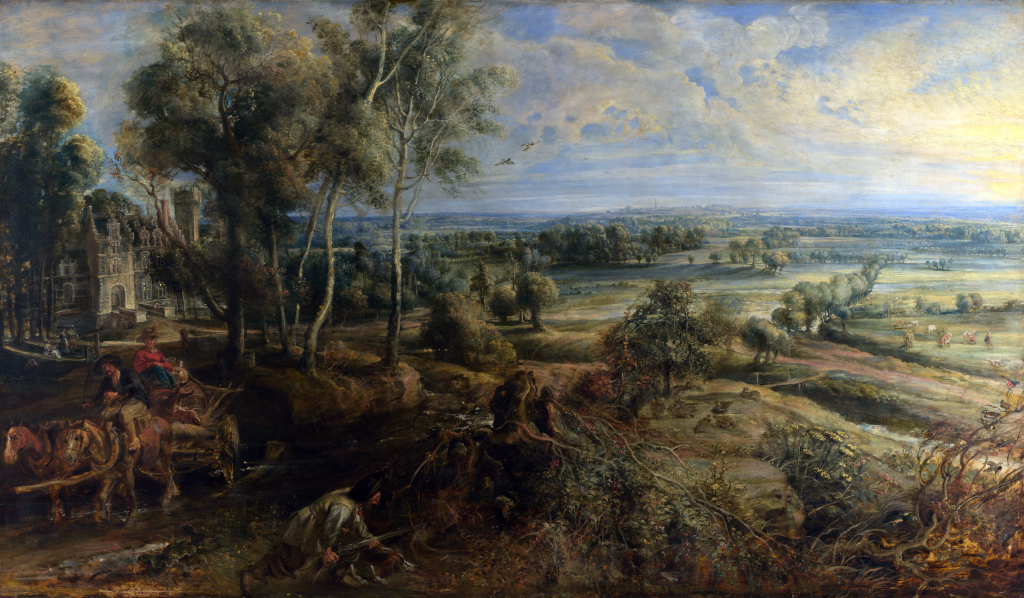
Eleven masterpieces by Peter Paul Rubens that show not only his range as an artist, but also his lasting impact on the Baroque style. Every painting is proof of his ability to show emotion, motion and beauty which was put in order a title as one of top artists in history.







